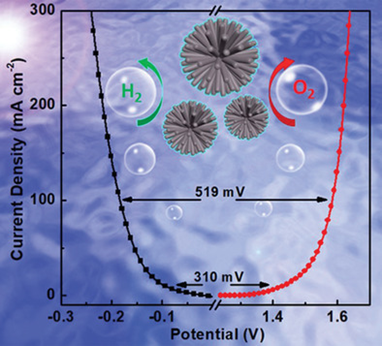Direct use of metal–organic frameworks (MOFs) with robust pore structures, large surface areas, and high density of coordinatively unsaturated metal sites as electrochemical active materials is highly desirable (rather than using as templates and/or precursors for high-temperature calcination), but this is practically hindered by the poor conductivity and low accessibility of active sites in the bulk form. Herein, a universal vapor-phase method is reported to grow well-aligned MOFs on conductive carbon cloth (CC) by using metal hydroxyl fluorides with diverse morphologies as self-sacrificial templates. Specifically, by further partially on-site generating active Co3S4 species from Co ions in the echinops-like Co-based MOF (EC-MOF) through a controlled vulcanization approach, the resulting Co3S4/EC-MOF hybrid exhibits much enhanced electrocatalytic performance toward the hydrogen evolution reaction (HER) and oxygen evolution reaction (OER), with overpotentials of 84 and 226 mV required to reach a current density of 10 mA cm−2, respectively. Density functional theory (DFT) calculations and experimental results reveal that the electron transfer between Co3S4 species and EC-MOF can decrease the electron density of the Co d-orbital, resulting in more electrocatalytically optimized adsorption properties for Co. This study will open up a new avenue for designing highly ordered MOF-based surface active materials for various electrochemical energy applications.
https://onlinelibrary.wiley.com/doi/full/10.1002/adma.201806672
